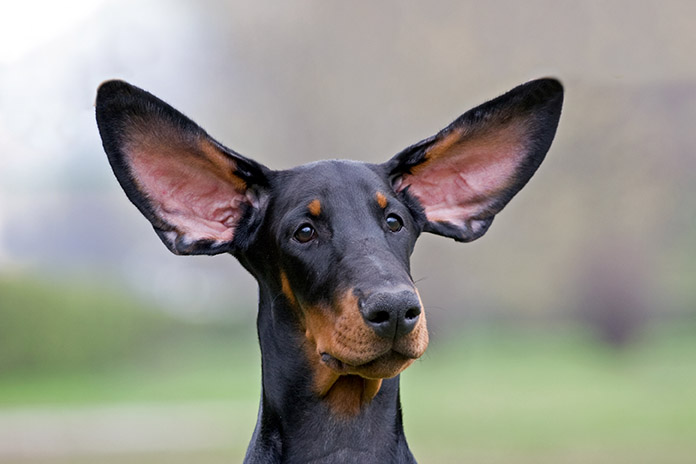
Most dogs are not excited at the prospect of having their ears cleaned, but it’s a necessary part of their overall health care. Your dog may be fortunate and not need very frequent ear cleaning, but most dogs need to have dirt buildup cleaned every so often to discourage infections. If your dog’s ears seem sensitive when they are touched, there is most likely some issue causing discomfort.
Cleaning the Ear
Purchase an ear-cleaning solution recommended by your veterinarian. Other supplies needed include cotton balls or gauze pads and a towel. Don’t use any other products, such as cotton swabs which can result in trauma to the inner ear. The process can be a bit messy, so dress appropriately and do the procedure in the bathroom or kitchen where it is easy to clean up. When ready, follow these three steps:
1. Choose a time when your dog is relaxed to make the process go smoothly. Have some treats handy to distract your dog if it starts to get restless.
2. Squeeze enough of the cleaning solution into the dog’s ear canal and gently massage the base of the ear for about 30 seconds. Listen for a sound (squishy) indicating any debris or buildup has been broken.
3. Your dog will start shaking its head. Use the towel to wipe down the dog’s face, and to protect your clothing. When the head-shaking is finished, use a cotton ball or gauze pad to wipe out the ear canal, going no deeper than the length of one knuckle. Stop cleaning immediately if your dog appears to experience any pain, and call your veterinarian for advice if this happens.
Ear Infection Symptoms
An ear infection requires a trip to the veterinarian’s office to verify the problem and determine the course of treatment. The following symptoms are indicative of an ear infection:
• Redness and inflammation in the ear canal
• Scratching the ear and surrounding area
• Head shaking
• Odor coming from the ear
• Rubbing the ear on furniture
• Discharge from the ear (bloody, yellow, or brown)
• Crusty scabs on inside of the outer ear
• Hair loss in the area of the ear
• Walking in circles
• Unusual eye movements
• Loss of hearing
• Appears to be experiencing ear pain
It’s important not to try to clean an infected ear at home, as it can worsen the problem. If you recognize any of the listed symptoms occurring with your dog, call your veterinarian for an appointment. Ear infections can happen quickly. Your dog may be fine in the morning, but be uncomfortable and displaying symptoms in the afternoon. Whether the problem is due to an ear infection, ear mites, allergies, or fleas, it requires medical attention and evaluation from your veterinarian.
Certain dogs, especially those with long droopy ears (for instance cocker spaniels, setters, and basset hounds) are more prone to ear infections, as are those who are swimmers. Droopy ears are harder to get dry, and bacteria forms in the moist climate inside. The ear hair traps moisture and other debris inside. Keeping the hair around the ears trimmed helps some. If you dog loves to swim, ask your veterinarian about drying agents for your dog’s ear care following time in the water.
Taking care of your dog’s ears is an important part of a good health regimen. Always consult your veterinarian if anything appears abnormal. Protecting your dog’s ears today can help prevent deafness in the future.
